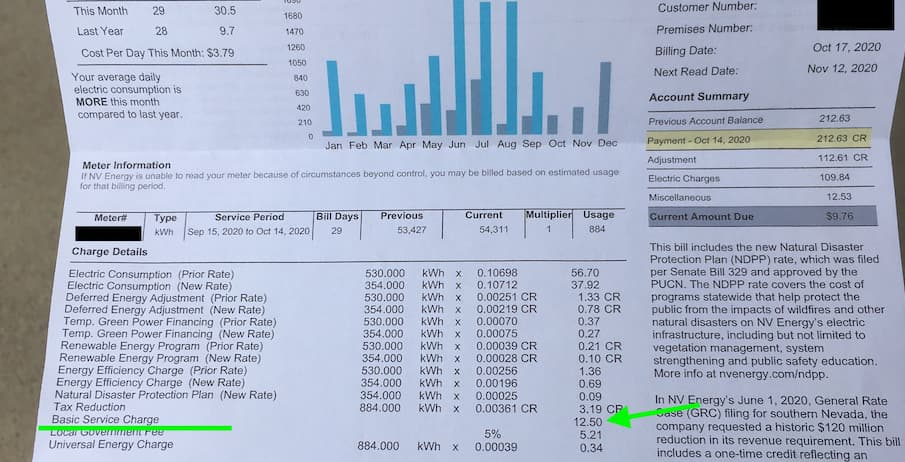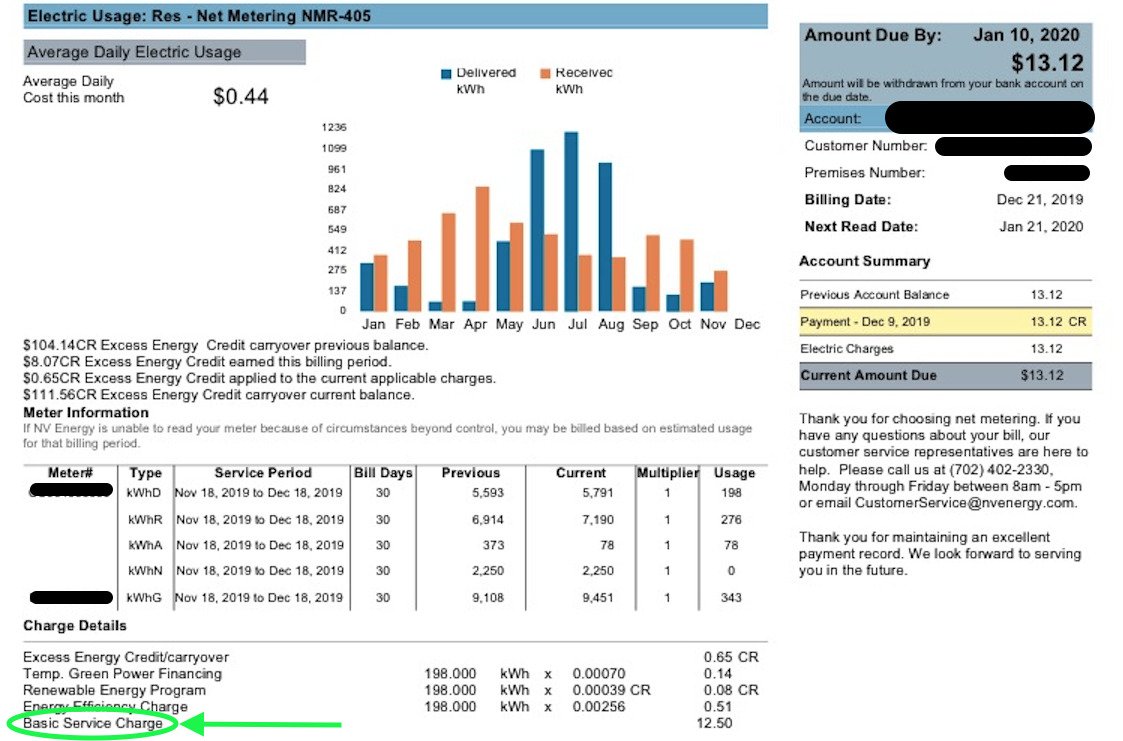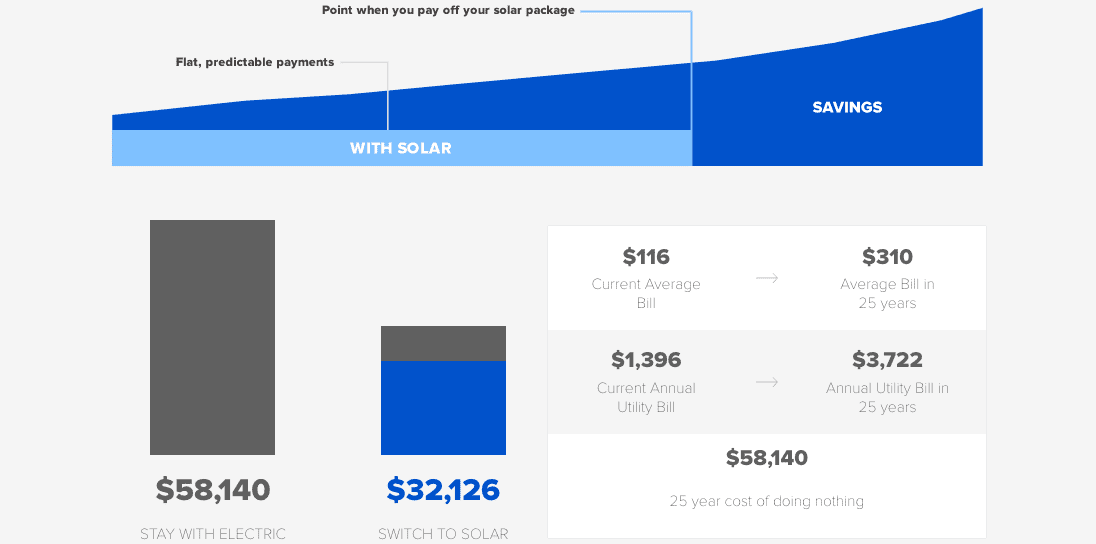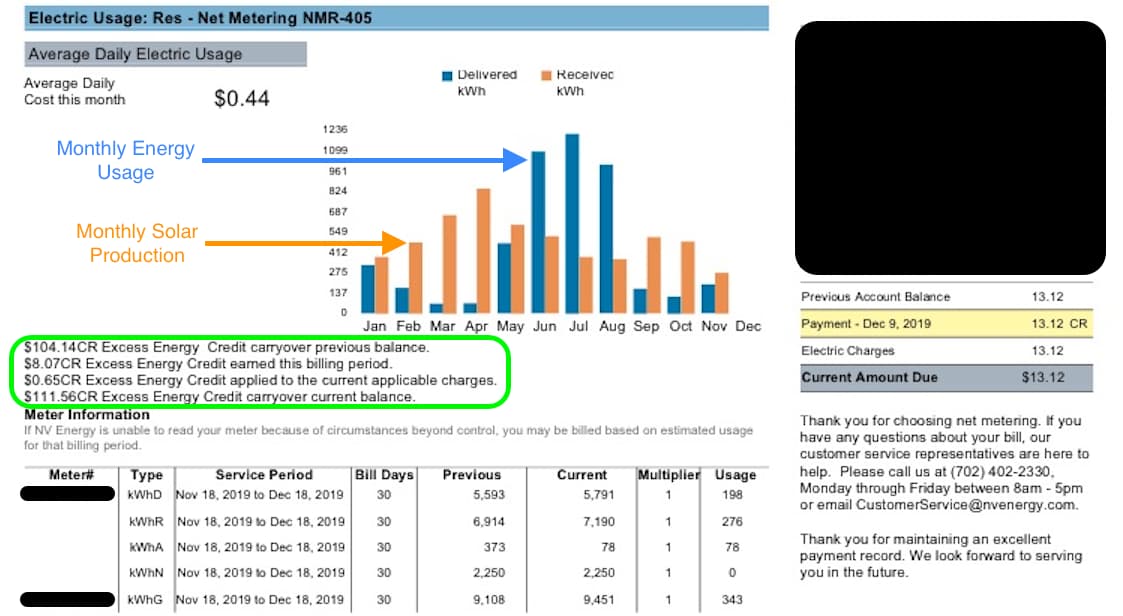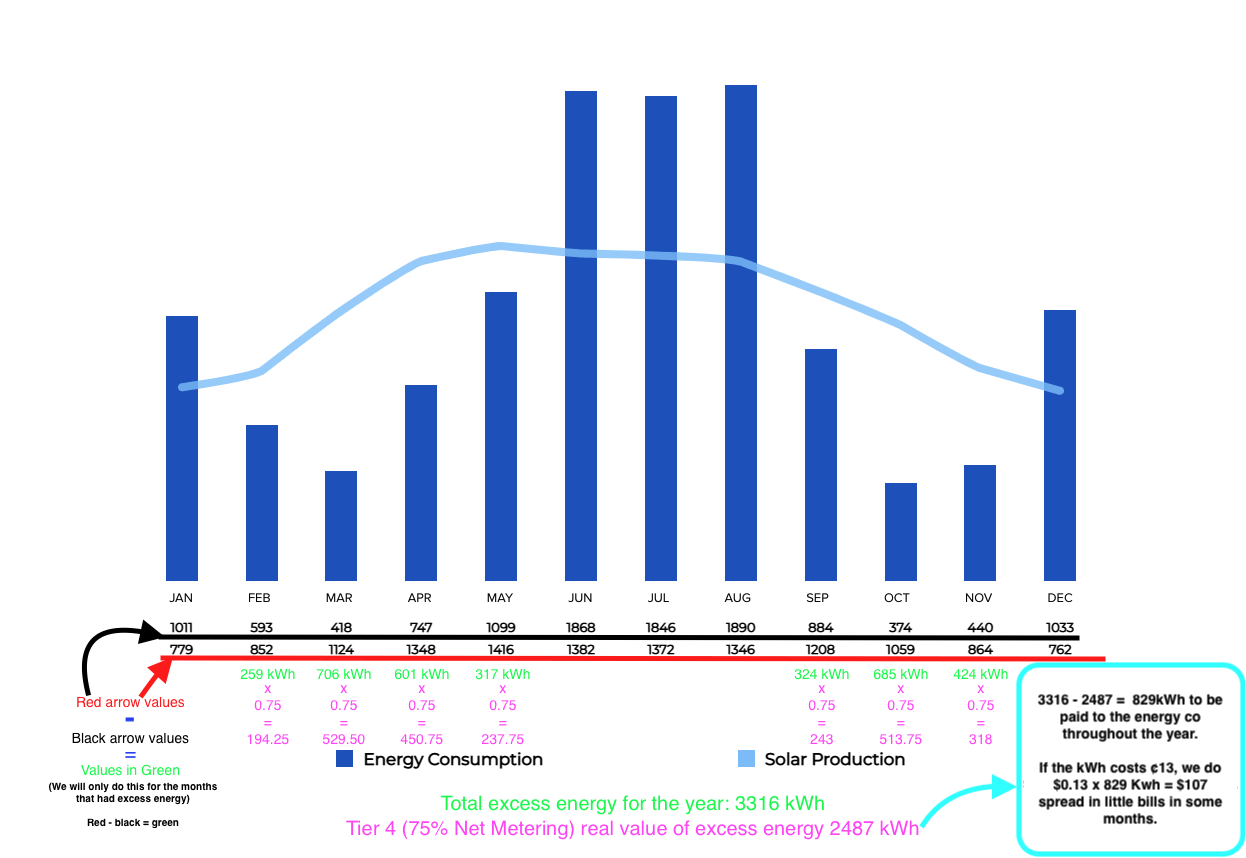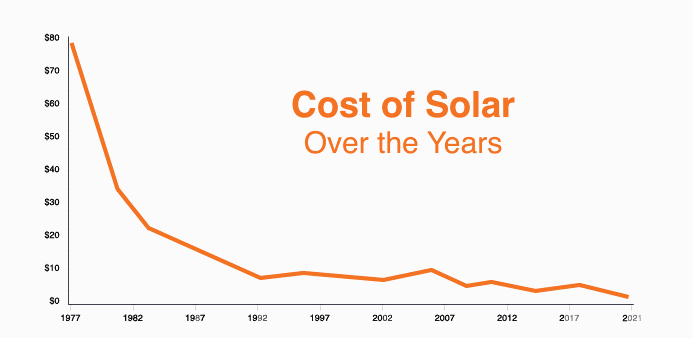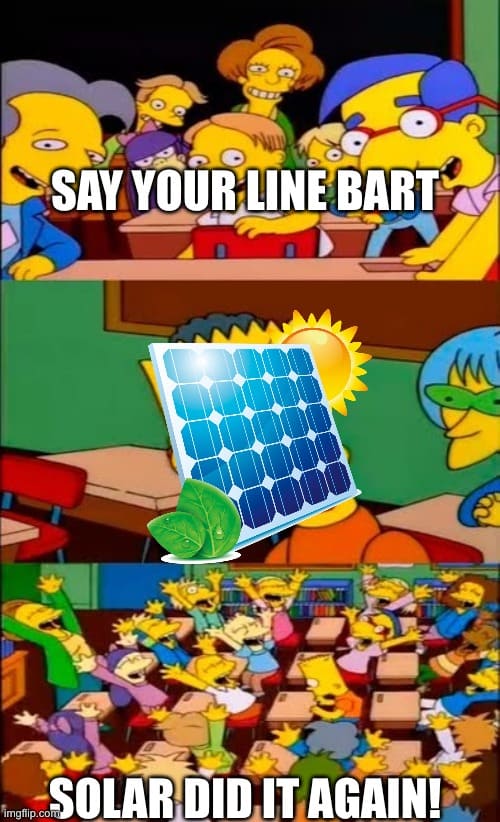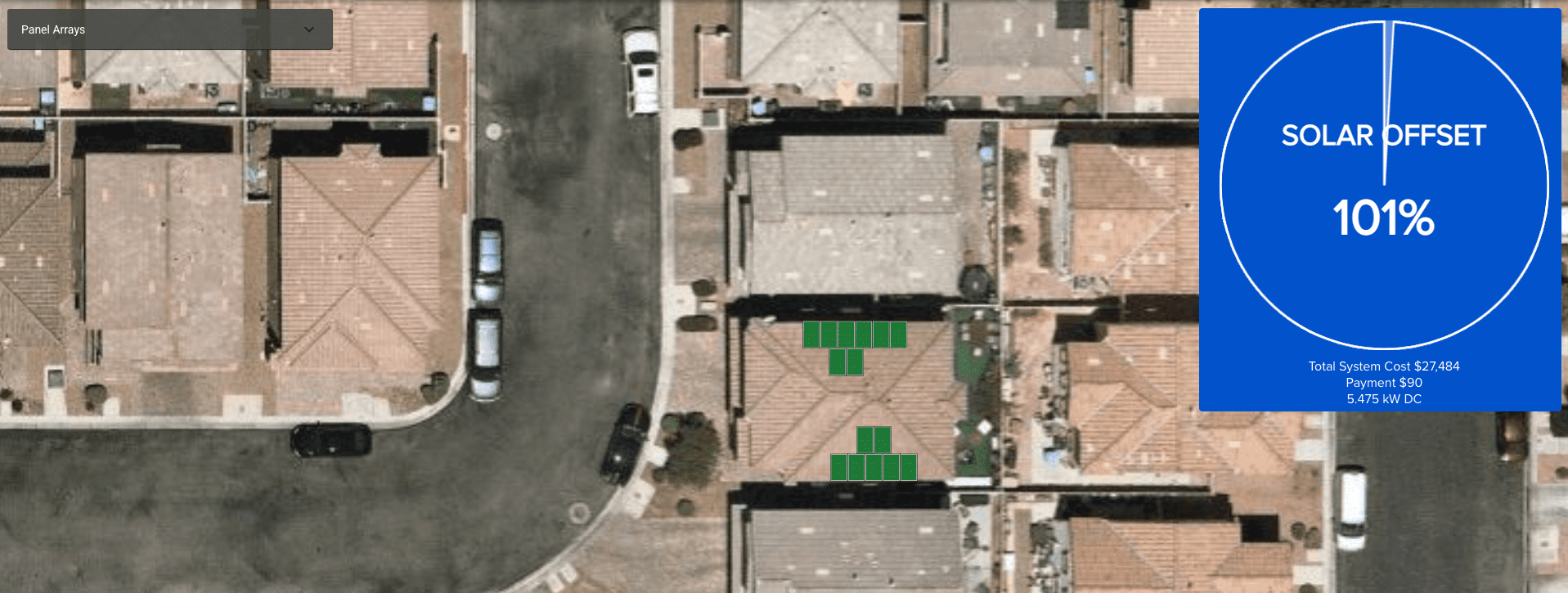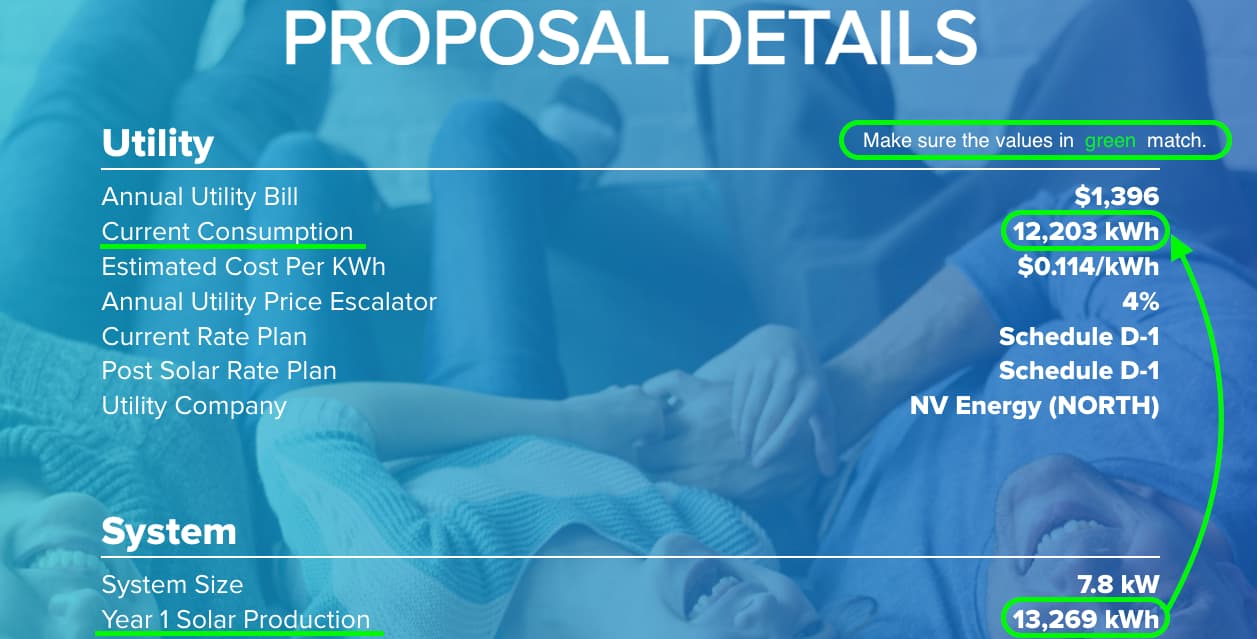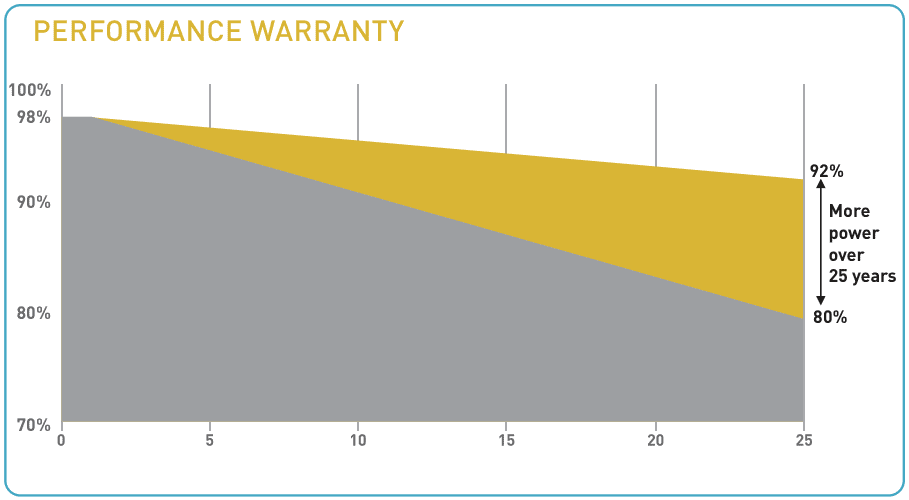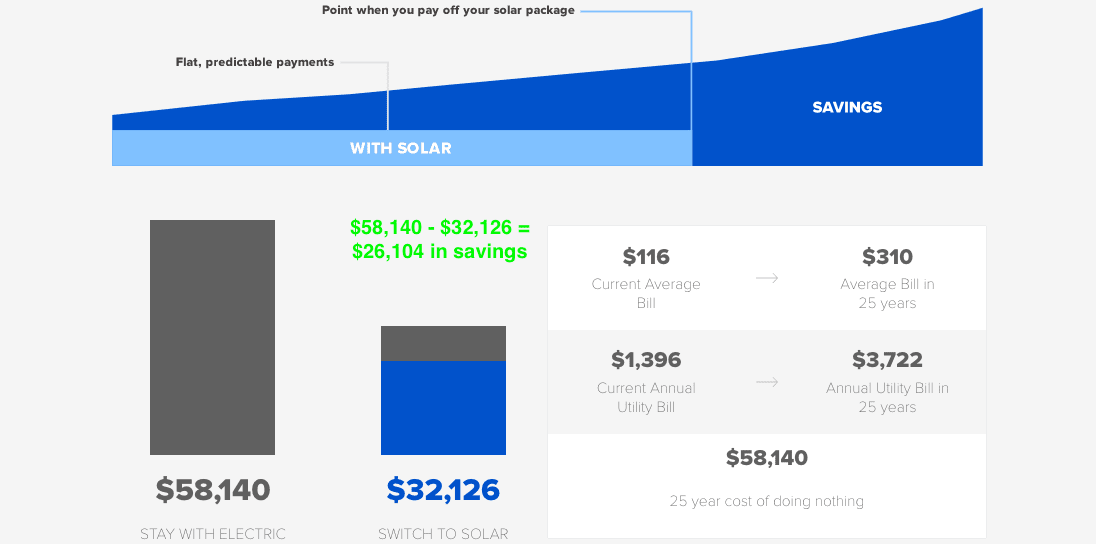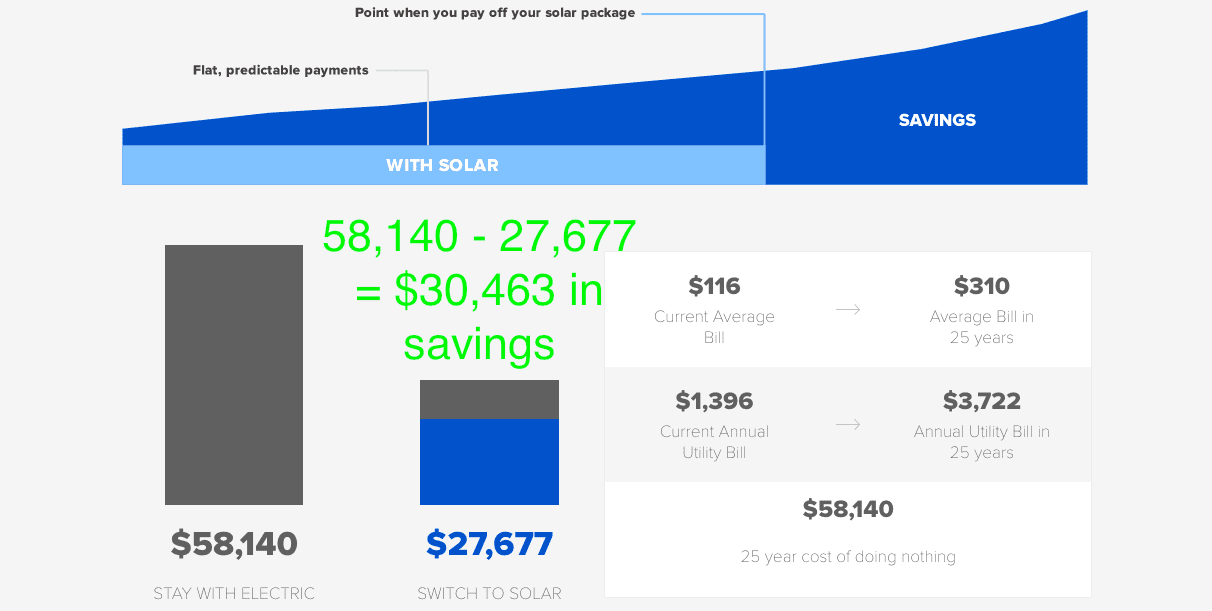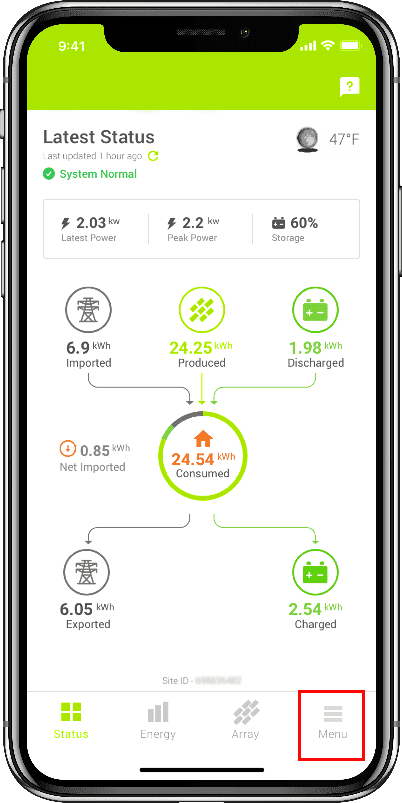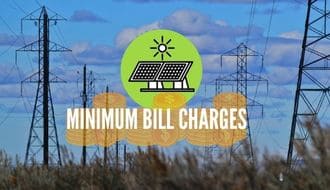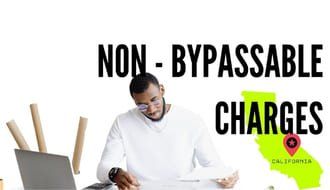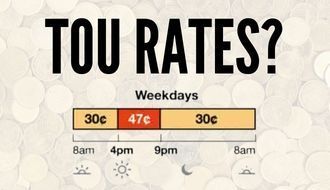#3 The Nevada net metering war and the final window of opportunity in its aftermath.
To understand this we're going to travel back in time. Welcome to Solar History 101. Let's get started.
The first homeowners that went solar, were not treated as well as the ones that do today. Back then, 2015ish, there was no legal
framework that protected them from every angle possible.
There was a war waged between the state senate and the energy monopolies. Or monopoly? That's a subject for another day.
They were trying to put a stop to the solar uprising, just like in Terminator®.
Punishing the homeowners who had it, they managed to temporarily achieve that by using the legal
loopholes to change the way they credited the energy houses produced.
Example: Let's say they were selling the kWh to homeowners at ¢13. Back then, for every kWh their system produced, they were credited at ¢13 as well; a 1:1 rate. But, after their changes, they were only getting credited for 50% of that in some cases. It's like you had suddenly chopped the system by taking half the panels off the roof!
All because the kid wanted their candy. What a low blow right?
The good thing is the
senate took the matter into their own hands and quashed them by passing bills like AB405 that put an end to this and gave birth to a new era; that of the
new net metering.
But once again, monopolies fought hard to stay with a
piece of the pie. They just couldn't let their huge profits evaporate in the blink of an eye...
Although this time they could barely get around these bills, they did manage to plant an
evil seed to secure their share for the future.
But before we get to that, let's zone in on something that will help you understand it...
What is net metering?
Have you ever wondered what happens to all the
excess power produced by your system when you don't use all of it? That's where
net metering comes into play.
During the year, there are seasons and months where you'll consume more than what your system generates, and others that work the other way around. At the end of the year, they
balance each other out.
In other words, if you add the year's worth of electricity generated by your system, it will
equate to 100% of what your house used during that same year. (Assuming that your system was properly designed of course, as we spoke about in Section #1).
Take a look at this. The
orange bars are the solar production and the
blue ones the consumption. On months with a surplus you will see your excess energy being stored as dollar credits like the ones circled in
green:
Can you see how the orange months
balance out the blue ones? That's
net metering
in action.
And who keeps
track of this? The so-called
smart meters aforementioned.
Think of net metering as a bank that
stores your excess energy on the grid, while you're waiting for the rough months where you'll make use of it to arrive.
However it doesn't only happen within a month. It can also happen in the span of day. Think of it.
During the day your panels are producing, but during the night you are asking back for that energy that was "stored" in the grid.
"But Frank, how is this linked to what you just told me?"
The New Net Metering almost
blew power companies out of the water. Their high commands and executives probably puked when they heard of it.
Remember the evil seed they planted to secure their future? They did this by coming to an agreement with the senate; which was trying to find a way to be "fair" with
both homeowners and utilities.
What was this agreement? Structuring something called
Tiers in the case of Nevada.
They came up with 4 Tiers. The first 3 had a
cap at a max of 80 megawatts (80,000 kW). Just so you have an idea of how much that is, the average residential system in Nevada is 8kW.
This means that for every 10,000 homeowners approx, that tier would be full, they wouldn't accept anybody else, and they'd move on to filling the next one.
What happens when a Tier gets full?
This reminds me of Titanic® when passengers were trying to escape on those canoe-like boats. You & I know they were capable of housing more people than the ones that were in.
Just like those boats, tiers could easily accommodate more homeowners than what they were capped at. And don't get me started on Rose and how Jack could've fit on that piece of wood.
But anyway, getting back on topic...
- Tier 1 (95% net metering): Full after 80 mW were reached. An approx 10,000 Nevadans with solar on their property.
- Tier 2 (88% net metering): Same as above. Marked as full once 80 megawatts were hit.
- Tier 3 (81% net metering): Same as Tier 1 & Tier 2.
- Tier 4 (75% net metering): No cap as to how much homeowners or megawatts fit here since it's the final tier.
And what does X percentage for net metering mean?
You're probably thinking of the worst. And you might not be wrong at all...
Remember how net metering was supposed to be like a bank that stored your excess energy at a 1:1 rate? Well, they made it so that for every tier that became
full, the next would become less and less 'net-meterish'.
And when that happens, according to the laws, we can't call it net metering. So let's comply with them and call it by its real name:
net billing!
Evil seed once again.
For instance, an 88% net billing means that the excess energy you produced will not be stored for you at 100% of its value or -1 to 1-, but instead at 88% of it or -1 to 0.88-.
Example: Let's say that in March, your system generated an extra 770 kWh that you didn't use. Pretending the energy company sells their kilowatt at ¢13, that would be 100 bucks worth of energy (770kWh x $0.13 = $100). But instead of storing those $100, they would only store $88 bucks (677 kWh) because of the 88%.
This means that when summer hits you'd have $88 of cushion that will kick in for the excess energy you're going to consume. Not taking into consideration the
other months where you had a surplus.
And just so you know, as of July 2020, Tier 3 became full. All of us 2021ers and the ones who come after that, will be fitted into Tier 4 (75% Net Billing).
If that's the case why would I even want this?
Wait, that's not all! Have you ever wondered what has made people so skeptical about solar? Or why do Nevadans have
mixed feelings about it?
You could say it's because of these Tier structures... but it's
actually because companies usually hide this from the homeowners to avoid "scaring them away".
They also try to
bury the fact that Nevada's energy monopoly has capped the max size of a system to where it's only able to produce 100% of the energy you consume in a year, not more than that.
But if the energy on the months where you have an excess, is only going to be worth 75% of its real value. It would technically
not cover 100% of the energy you used in the whole year. Are you following me?
Zoom in and take your time to look at this image below, it will better explain that:
I'll say it again just in case:
The 75% rate only applies to excess energy that has to be stored, not to all your solar production. Don't mix these two up. This would NOT be the same as having your system produce only 75% of the energy you need.
But still... every single one of us wants our solar to produce 100% of the electricity we need, not less than that. Am I right? Give me a 'hell yeah!'
What if I told you that
even with this, you'd still be better off with solar?
"You're crazy Frank! Why would you say that?"
Missing out on previous tiers and getting into Tier 4 at 75% net billing might have you
thinking that you missed your shot at this.
"Looks like it was a smart choice back then, but not anymore."
However, you could have actually not picked a
better time to go solar. I know, I know... you're probably thinking I should get medicated haha, but you're about to understand why.
As a matter of fact, you have 2 things going on for you that homeowners in the previous tiers
don't, and that nowadays makes them wish they had waited a little more:
#1 Better prices.
Take a look at this graph.
Image taken from our good friends at
SunPro
Homeowners from the previous years were getting their solar at a 20% to 30%
higher price than the ones that get it nowadays after such huge drops.
There you go, that
makes up for the 25% that is missing on Tier 4 with the net billing at a 75% rate (75% + 25% = 100%). I know you're probably better at math than I am, but it doesn't hurt to throw that in.
Quick bonus: Cash will always be king, but if you're considering financing, add to that the fact that timespans and APRs are lower than before and you end up with skyrocketed savings that back then were not achievable.
Starting to feel lucky now?
#2 Better just got even better.
Panels have become more resistant to weather symptoms that might
damage them like high winds, snow, and even sunlight. Yeah, the sun damages them too. Ludicrous huh?
They've also become more
effective, meaning that you need fewer panels to get the job done.
Lesser units, at a better price?
Now that's a combination for savings that could finally
knock out Mayweather for a 2nd time!
But my favorite one? They're prettier now. The earlier ones were uglier than a New York public toilet!
But it's not only panels, everything has improved. Panel mounts, monitoring systems, photovoltaic cells, inverters, etc. I could go on and on, but the point here is that these improvements
boost your savings into full-beast mode. How so?
Because they reduce the
odds of your system failing down to 15% compared to the last generations, and by double compared to the ones that came before.
But don't think that pushing it off more and more might yield
better benefits. Solar prices have started to plateau due to the huge jumps in innovation we just saw and research takes time.
On the other hand (evil seed for a third time), this new AB405 bill does not
explicitly describe how much time will Tier 4 be open for homeowners.
If they've done things like the ones described above... What
stops them from doing it again by using that loophole to their advantage to shave the net billing even further in the near future?
The good news is that the senate DID throw in a
provision that protects homeowners who jump into Tier 4 from having any changes done to the policies of that tier for at least 20 years, to prevent what happened in 2015.
The boats have yet not sailed. Jump on them now and save yourself by taking advantage of the legal protection while it's still available
before
these guys pull out all their cards.
And rest assured they will. Their acts have
clearly stated that they don't feel comfortable with solar, but the renewable energy uprising will keep gaining more momentum with every day that passes.
There's no getting back at us, we are The Resistance.




